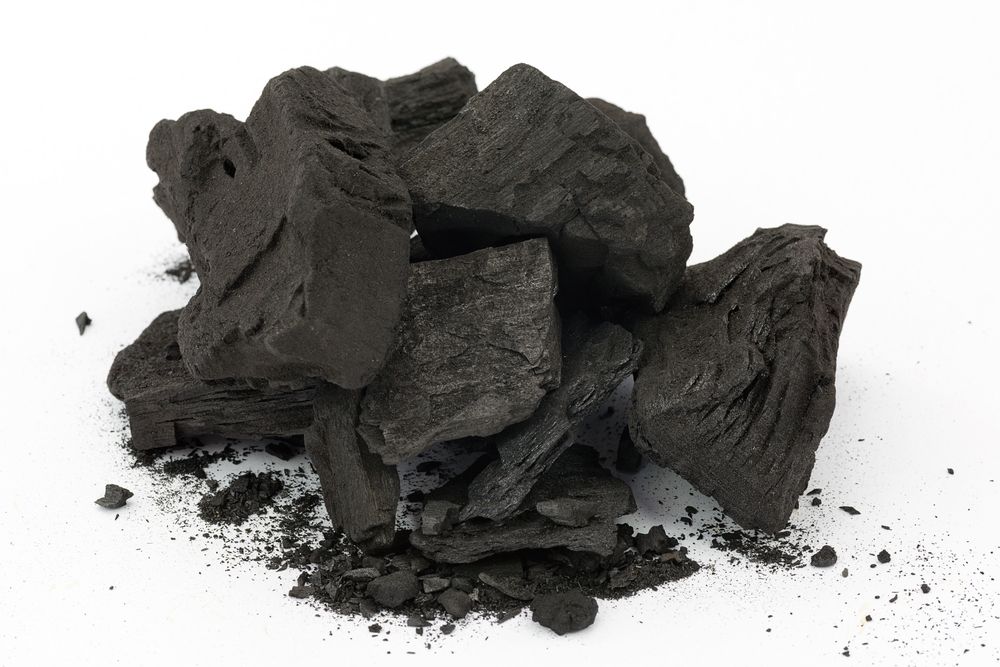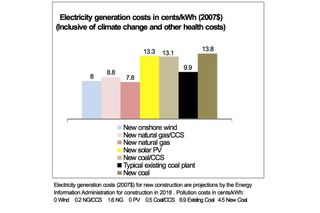
New Study Tracks the Social Cost of Carbon (Op-Ed)

Laurie Johnson, chief economist at the Natural Resources Defense Council's climate and clean air program, contributed this article to Live Science's Expert Voices: Op-Ed & Insights.
Here in Washington, D.C., one of the hottest debates around the Barack Obama administration's fight against climate change is perhaps the most important number you've never heard of: The social cost of carbon (SCC). In simplest form, the SCC is an estimate of the health and environmental damages caused by society's continued burning of fossil fuels. It shows the dollar value of damages avoided by reducing carbon pollution.
Unfortunately, most people don't have a good understanding of what the SCC is all about and why it's crucial that people take these costs into account when addressing devastation brought by climate change. As an economist who has studied the issue, it's sometimes hard to put these concepts into everyday language.
But the issue hit close to home just a few years ago when Hurricane Irene slammed into New England and devastated parts of Shelburne Falls, Mass., where I grew up and where my mom still lives.
The flood waters wrecked many of the buildings in town, floating one down the river like a giant water-logged raft (start the footage at 0:55 seconds). Many roads, bridges, homes, small businesses and farms were destroyed. In Western Massachusetts alone, residents filed more than $90 million of insurance claims.
These are the true costs of climate change — extreme weather events that scientists say will become more common as our world warms in the future. And these are the social costs that the government is now taking into account when measuring the costs of producing energy from dirty, carbon-polluting sources like coal and oil — and the benefits of clean energy sources like wind and solar.

Under the president's Climate Action Plan, the U.S. Environmental Protection Agency (EPA) has begun the process of setting standards to limit carbon pollution from new and existing power plants. The SCC reveals just how costly coal is — unwelcome information for politicians whose pockets have been lined by the industry. Not surprisingly, some extremists in Congress are trying to ban the government's use of the SCC, in an effort to prevent agencies from measuring carbon-pollution reduction benefits and promulgating protective standards.
Sign up for the Live Science daily newsletter now
Get the world’s most fascinating discoveries delivered straight to your inbox.
A recent study I coauthored with Starla Yeh of the NRDC and Chris Hope of the Judge Business School at the University of Cambridge, published in the Journal of Environmental Studies and Sciences, demonstrated the true cost of fossil fuel-generated electricity by adding to production expenses the damages captured by the SCC and other health costs associated with burning fossil fuels, such as increased mortality and asthma from smog.
After accounting for those impacts, we found that the real cost of U.S. electricity was much higher than what Americans see on utility bills — especially for coal. On the other side of the ledger, cleaner energy is cheaper and more economically efficient, from a society cost-benefit perspective.
Importantly, costs for renewables are likely overestimated: Reports as recently as August from the Department of Energy find wind and solar costs rapidly declining, at much faster rates than analysts previously anticipated. In contrast, coal-generation costs have been increasing.
My colleagues and I calculated total electricity costs using the main SCC value estimated by a 12-member interagency task force established by the Obama administration.

After accounting for all costs, new coal is the most expensive form of electricity: 13.8 cents per kilowatt hour, beat not just by wind and natural gas, but also coal with carbon capture and storage (CCS) and solar photovoltaic (13.1 and 13.3 cents, respectively). And, for existing coal, the United States could cost-effectively replace some of its dirtiest coal plants with wind, natural gas with CCS and conventional natural gas. Though not in the figure above, other SCC estimates our studyexamined put all of the cleaner energies ahead of both new and existing coal (in these estimates, damages to our children are "discounted" less than they are by the Obama administration).
In short, it would be cheaper to build new power plants from wind turbines or solar panels than from coal. It would also be cheaper to replace some of the dirtiest coal plants currently in operation with these cleaner sources.
The case for cleaner sources is actually more compelling than suggested by our analysis, because our research couldn't account for a lot of factors that make fossil fuel generation more costly and renewables cheaper. For example, the SCC does not include a great number of damages, or "upstream" environmental impacts associated with fossil fuel extraction, such as methane emissions from natural gas wells, spills from pipeline transmission, and land disturbances from coal mining. And, as mentioned above, innovation is rapidly driving wind and solar costs down, while coal costs are trending up.
So, going back to Congress, our study's results make a good case for strong protective standards on carbon pollution from the nation's power plants — standards some politicians are trying to block by denying climate change has costs. The EPA just proposed limits for new power plants, and is set to propose standards for existing ones in June of 2014.
Our analysis shows that we can help slow climate change while at the same time reducing the real cost (i.e. costs inclusive of pollution damages) of American electricity. Building new generation from wind, solar and fossil fuels with carbon capture technology, and replacing some of the nation's dirtiest coal-fired generation with these same sources, will save Americans much more than it will cost. Strong standards are not only a common-sense measure to protect our children and their future, but also good economics.
The author's most recent Op-Ed was "No More Free-Pass for Carbon Pollution." The views expressed are those of the author and do not necessarily reflect the views of the publisher. This version of the article was originally published on Live Science.













